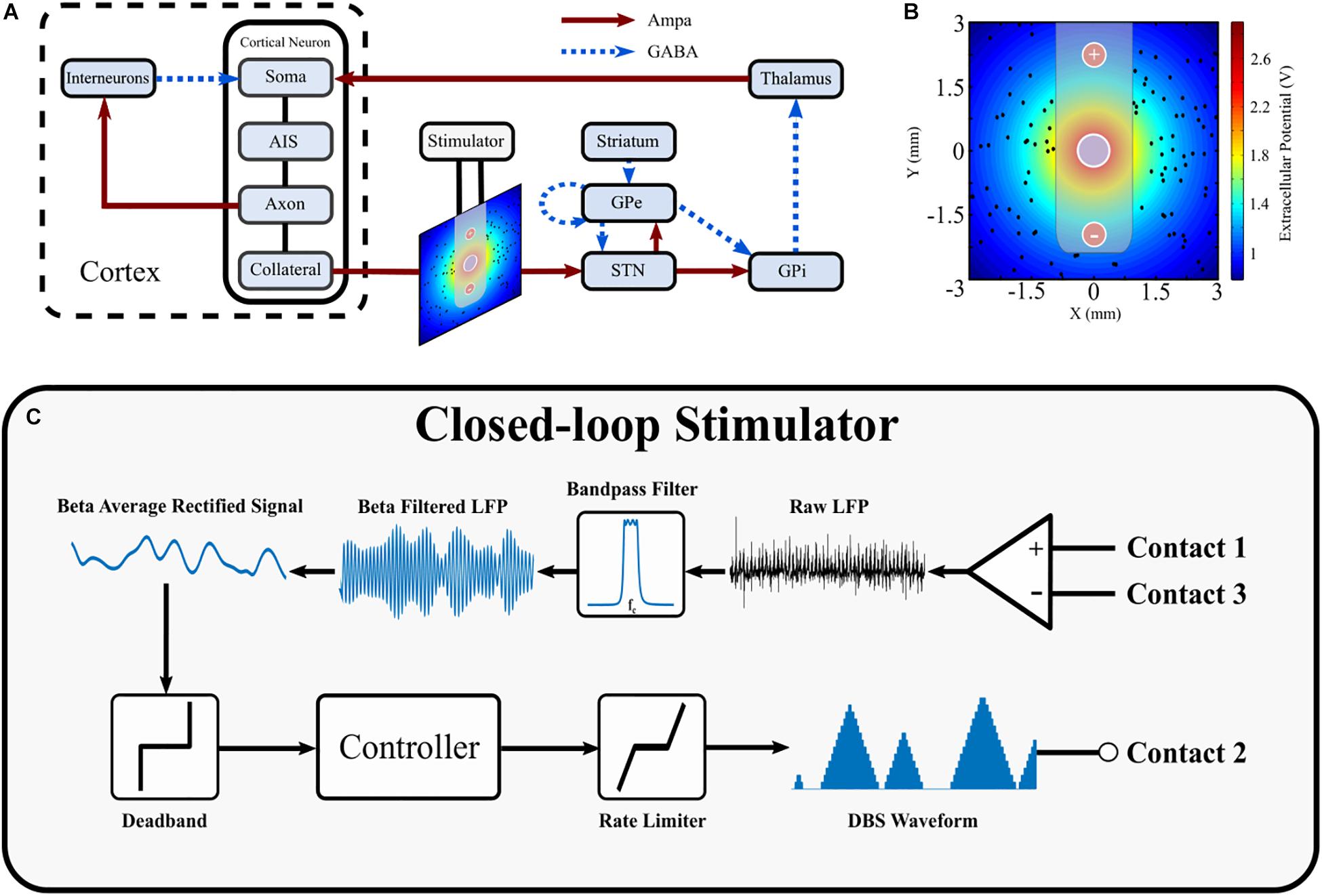This repository contains python code for simulating a Hodgkin-Huxley based neural network model of the cortico-basal ganglia network with closed-loop deep brain stimulation to test closed-loop DBS control strategies.
Fleming, J.E., Dunn, E. and Lowery, M.M., 2020. Simulation of closed-loop deep brain stimulation control schemes for suppression of pathological beta oscillations in Parkinson’s disease. Frontiers in neuroscience, 14, p.166.
The code contained in this repository simulates the cortico-basal ganglia network and closed-loop DBS during Parkinson's Disease. This code is companion to the paper:
"Simulation of closed-loop deep brain stimulation control schemes for suppression of pathological beta oscillations in Parkinson’s disease"
John E. Fleming, Eleanor Dunn, Madeleine M. Lowery March 5, 2020 : 166
DOI: 10.3389/fnins.2020.00166
which should be cited for academic use of this code.
The model is simulated using PyNN with NEURON as it's backend simulator, thus follow their installation instructions at:
-
Copy the included PyNN files from the downloaded model folder to their corresponding location on your computer (i.e. the directory of your PyNN instatllation - Updated PyNN files are needed for correct simulation of the multicompartmental cortical neurons and for loading model simulations from a presimulated steady state.
-
Compile the NEURON model mod files using either mknrndll or nrnivmodl, for windows or Linux, respectively.
-
Run run_CBG_MU_Pool_Model_to_SS.py
Example:
-
From the command line/terminal navigate to the folder containing the model.
-
Execute "python run_CBG_Model_to_SS.py neuron"
Explanation: There is an initial transient period in the model (~8 seconds). This model simulation runs the model for the transienThere is an initial transient period in the model (~6 seconds). This model simulation runs the model for the transient period and creates a binary file (steady_state.bin) at the end of the simulation. This binary file captures the state of the model at the end of this transient simulation (i.e. after the model has reached the steady state)
-
Running the Model: - Once the steady state of the model has been saved you can run the model by navigating to the model directory in the command line and typing:
"python run_CBG_Model_Amplitude_Modulation_Controller.py neuron"
Output files of the simulation are then written to a "Simulation_Output_Results" folder when the simulation is finished. Model outputs are structured using the neo file format as detailed in https://neo.readthedocs.io/en/stable/.
